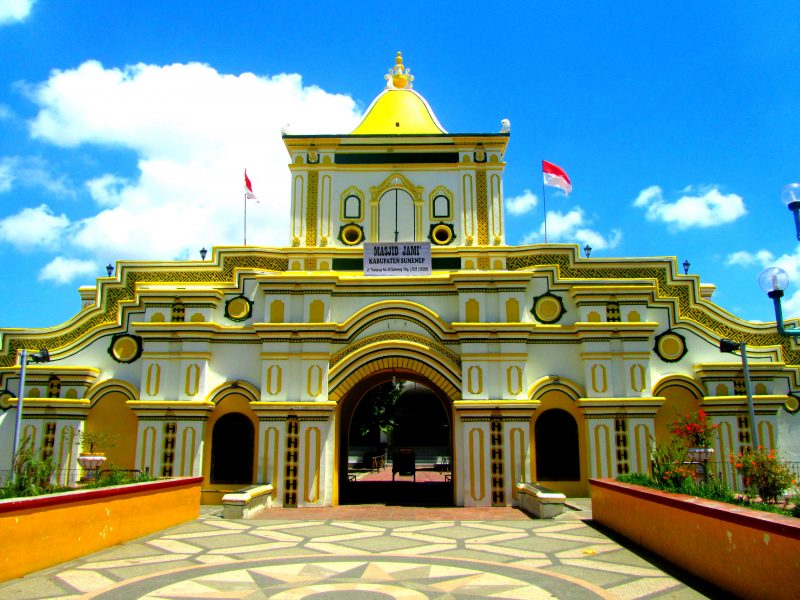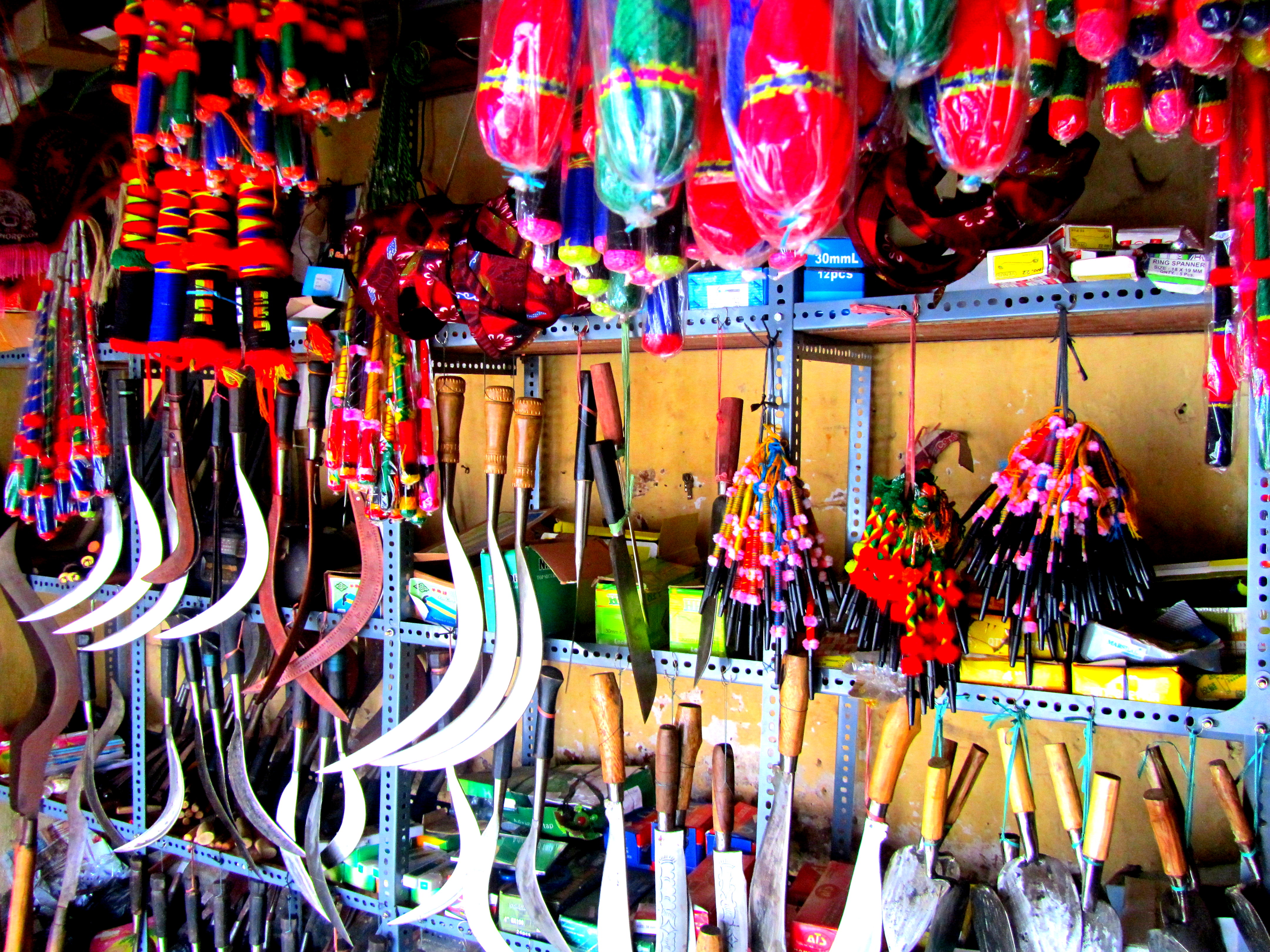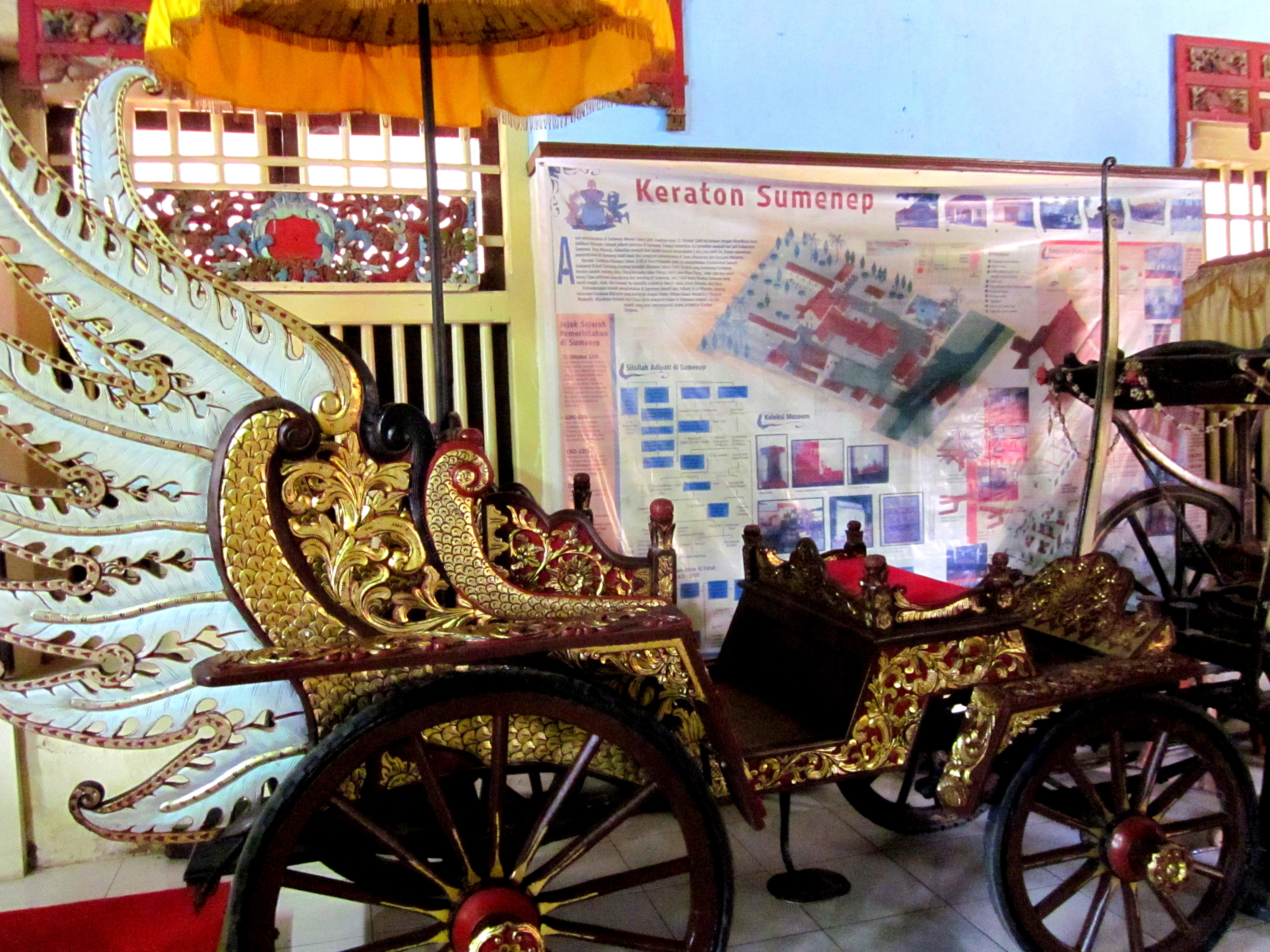Sumenep is a town I love. Having visited it frequently for nearly 30 years, I can say it has changed little, retaining its quaint charm. Ever-aware that anything can be lost suddenly to progress – the demolition of old buildings to provide space for malls and car parks — I can report that largely the town’s authorities have respect for its history and cultural prominence, and it will be proudly celebrating its 750th anniversary in October 2018.
To the outside world Sumenep is a bit of an enigma, seen as too far away on the far side of an island off Surabaya, or off-putting by reputation as a town on a hot and arid, inhospitable island, with few mod cons. This is how it is often portrayed.
It’s a shame, because Madura has a number of fine attractions just opening up to the public, including Gili Labak, a beautiful islet perfect for snorkeling and diving and approached from nearby Sumenep by boat.
For me Sumenep’s attraction lies in its historical sites, a town centred around a pretty alun-alun or town square and comprising principally of a very fine and beautiful mosque, and a kraton or palace, and the Museum Daerah showcasing the town’s long history. Few towns in East Java have retained as many of their old buildings as Sumenep has managed to do, and these are conveniently scattered not too far apart so as to allow most to be visited on foot. And the kraton is the last remaining in East Java.
For me, the pleasure of a visit is to wander leisurely to the various sights, or to take a becak or rickshaw. And, it is true, Sumenep in the dry season can be hot and close. It’s a very flat town, however, which is some compensation when walking.
The history of the town as we see it today is largely 18th century. It was clearly prosperous judging by the elegant style of the architecture, explained by the amount of trading it did and, it is said, the amount of taxes it didn’t pay to the VOC. Most of the important civic architecture of this period was designed by a Chinese architect appointed by Panembahan Sumolo, son of Queen Ayu Tirtonegoro. Law Pia Ngho is thought to be one of the many Chinese who fled the anti-Chinese riots in Batavia in the mid-1700s and settled elsewhere, in this case Sumenep, where he was employed as the town’s elite architect and builder.
His most outstanding work is, in my opinion, the Masjid Jamiq (also called Masjid Agung), a truly beautifully-designed mosque with a striking façade that sits apart from the mosque itself forming a gateway to the prayer room enclosure. The mosque’s architectural language draws on several cultures: Chinese, Arab and European, and the bright colouring suggests more the Chinese style of adornment. The prayer room interior is quite fine, with substantial white pillars supporting the three-tiered roof.
As you leave the mosque it is worth walking outside the compound and turning left along a short lane to the rear of the mosque wall. En route you will pass a couple of fine late 19th century villas featuring delightfully pretty colonnaded verandas with delicate wrought iron filigree decoration, and it is easy to imagine the Dutch sitting here in the cool of the afternoon in all their finery. As you turn into a street that is directly behind the mosque a market can be found in the mornings. Dozens of roadside stalls pack the length of the street selling all manner of items. A vendor of farmers tools and implements offers the iconic Madurese celurit or sickle, brass cow bells, whips, ploughs, hoes and hammers, many of which have the rough-hewn look of the cottage industry in their manufacture.
A little further along a vendor sits among bales of tobacco. The rich grassy smell of the aromatic leaf can even be pleasing to the non-smoker. Madura is famous for its quality tobacco and what we see here is destined for the older generation hand-rolling smoker who has about five local varieties to choose from.
Other stalls in this abundant market offer grated coconut while you wait for use in curries and cakes. Alongside, a woman is cutting up dozens of freshly slaughtered chickens, and fresh they do look. Wander further and you will delight in the variety of goods and provisions for sale.
As the sun beats down, now is a good time to take a break and return to the hotel for a rest.
An afternoon walks to the kraton or sultan’s palace makes for a pleasant visit especially if you go to the Museum Daerah or provincial museum across the road (the highlight of which is a royal carriage), and the interesting streets to the rear of Dutch-era houses from the mid-19th century through to the 1930s.
The kraton is housed behind a wall with a particularly fine arched entrance that is high by modern standards but was designed to allow for horses and carriages to pass through. Painted in bright yellow the walls of the kraton connect with the bright yellow of the mosque on the other side of the alun-alun which separates the two. Built in 1750 the kraton is attractive in design and features. Pretty wood carvings, ceremonial canon, and glimpses inside the private chambers of the palace allow you to get a sense of what life must have been like in the past. The Pendopo Agung or Great Hall in the central grounds offers gamelan and traditional dance concerts on certain days and is the perfect setting for them. Aside from the museum, across the road the kraton has its own collection of royal antiquities, mostly in poor condition but nonetheless providing insights into the period. And don’t forget the Taman Sari or Water Garden, where, we are told, princesses once bathed under the gleaming eye of the sultan who admired the view.
A trip to Sumenep is certainly worth considering for a couple of days. With other attractions in the area such as the Asta Tinggi Royal Cemetery, a fine Chinese Temple, and surrounding islands offering water sports, Sumenep is a perfect and pleasant base for even longer.
How to get there: Take the ferry from Surabaya’s Tanjung Perak port or cross the Suramadu bridge and drive eastwards to Sumenep, a journey of about 3.5 hours and 170 km. Alternatively, newly established regular flights are available to Sumenep airport from Surabaya.








